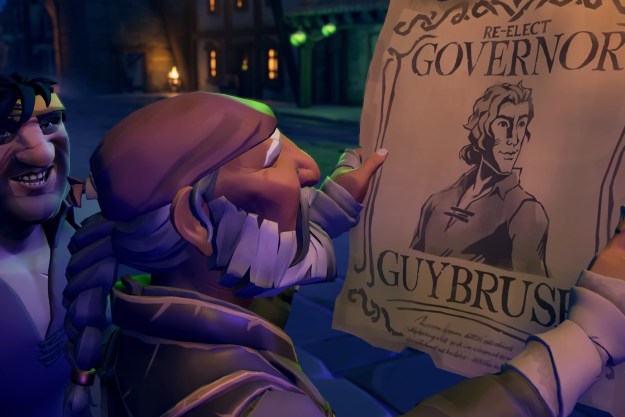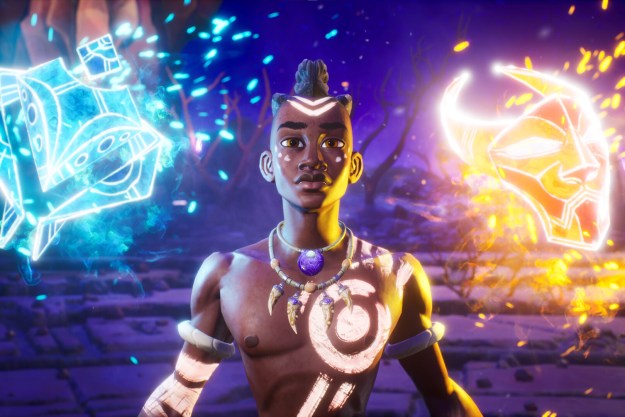Highly realistic racing simulators have become tremendously popular. A once-lean field of titles (namely Forza Motorsport, iRacing, and Gran Turismo) has expanded with several new entrants, each with fiercely loyal fans. Crowdsourced 2015 newcomer Project CARS has amassed a sizeable following since launch, thanks to a long rollout of post-launch features including VR support — and now Project CARS 2 is on the way.
Digital Trends was among a small group of media, gamers, and racing drivers to test Slightly Mad’s latest creation, Project CARS 2, at CXC Simulations in El Segundo, CA. The experience, however, was not your average hands-on preview.
Tire lock-up, brake fade, steering sensitivity, throttle manipulation—driving in Project CARS 2 feels as close to the real deal as it gets.
Rather than a standard PC set-up, we tried the game on CXC Simulations’ Motion Pro II setup: a $50,000 simulator reserved only for the most dedicated (and wealthy) racing game aficionados. The force feedback steering wheels were sourced from racing equipment supplier Momo. The clutch, brake, throttle, and seat mirror GT3 racing specifications. The built-in vibration replicators and seatbelt tensioners reproduce track driving movements precisely… this isn’t just playing a game, it is virtual driving.
And Project CARS 2 fit right in. Building on the realistic look and feel, solid list of cars, and numerous track orientations from the original, the sequel seems poised to take simulation racing to a new level.
Strapping in
Racing simulators play by different rules than your typical driving game. Arcade racers, such as the Need for Speed series, boast thousands of cars and millions of customization options, but the level of detail for each vehicle feels rudimentary. By contrast, racing simulators forgo personalization in exchange for hyper-realistic vehicle design and driving dynamics.
“We work with vehicle manufacturers to make every detail of the in-game car realistic,” Rod Chong, Chief Commercial Officer of Slightly Mad Studios, told Digital Trends.
From tire lock-up brake fade, to steering sensitivity, to throttle manipulation – the experience of driving in Project CARS 2 feels as close to the real deal as it gets. Every minor mistake in real life that would cost you a second per lap or a nasty encounter with the wall has the same consequence in the game. In other words, we hesitate, clench, and sweat in the game to an equal degree as real racing.
Too early on the gas coming out of a corner and the car’s rear end kicks around instantly. Brake too late and you’ll have to release and re-engage the calipers to avoid plowing into the tire barrier. You sense the car getting light, or the lack of power before the turbocharger spools.
Racing simulators forgo personalization in exchange for hyper-realistic vehicle design and driving dynamics.
Visually speaking, we got to play both the standard PC version and VR using an Oculus Rift. When Slightly Mad’s crew straps into their game, they default to VR every time. That said, we just don’t think the visual clarity is there yet. It’s awesome to have every sense immersed in the virtual world, but without crystal clear visuals, it actually takes away from the driving experience. For now (and it may only be a short time we say this), we prefer an HD monitor to VR.
We also tried the game’s new rally driving mode. Unless you’re a pro driver, you can’t jump into a 600-horsepower rallycross car and drive it perfectly. Don’t expect a different situation in Project CARS 2. It takes us half an hour before we’re even remotely comfortable maintaining a drift. Before long, though, (and thanks in part to some one-on-one coaching from Honda’s Red Bull GRC driver Mitchell DeJong) we’re toying with the throttle, steering inputs, and e-brake to transition the vehicle from one slide to another.
Going the extra mile
Bringing that level of detail to the driving experience of specific cars into the game is a time-intensive process. New production cars become Project Cars models via CAD (computer-aided design) kits provided by automakers. We could write a whole article explaining CAD, but to over-simplify, CAD replaces manual design drafting and visualization with automation. Older vehicles are scanned, or, if the car is too rare to scan, digitized exclusively from available photography.
When a vehicle has been scanned or digitized, many developers would get the automaker’s approval and move on. The Project CARS isn’t satisfied with that. The team asks the manufacturer for a factory driver to test and sign off on another critical component of a simulated car – its driving dynamics. Notes from these OEM drivers and automaker-sourced track driving data are combined with feedback from Slightly Mad’s team of seven in-house pro drivers to form the most realistic experience possible.
We drove the all-new Acura NSX and an Indycar on the Long Beach Gran Prix track, followed by a Honda Civic Global Rallycross vehicle on a tarmac/dirt hybrid course. Though we haven’t driven any of these specific cars in the real world, we have driven race cars and supercars, giving us a benchmark for how these vehicles behave at the limit.
More Cars, more ways to drive
As expected, Project CARS 2 offers a wider variety of experiences than the original. The original Project CARS tossed you the virtual keys to 74 cars in 30 locations and 117 track orientations. At launch, Project CARS 2 will have over 170 licensed cars and the largest track roster of any console racing game – ever.
Project CARS 2 will have over 170 licensed cars and the largest track roster of any console racing game – ever.
“We were never very happy with the car list in Project CARS 1,” Chong admitted. “There were some big brands that were missing, so we’re adding those in. A lot of new tracks are coming too.”
Yes, it’s a little vague, but give credit to the fact that Slightly Mad is addressing the only real complaint players had with the first game. Fortunately, there’s even bigger news we can talk about.
We do know that Project Cars 2 will focus on making the most of its courses with variable driving conditions. It seems obvious, but a racer will adjust his or her driving behavior if its raining or cold. Project CARS 2 creates “dynamic environments” so you’ll almost never drive the car around the track the same way twice.
Though it is far from the first racing game to make weather a factor, Project CARS 2 goes a step beyond, adding elements that change as the weather shifts. Let’s say it starts raining. After a consistent downpour, water begins to pool at depressions in the track. These spots then become hazards for drivers. After the rain stops, those puddles will eventually dry up if the sun comes out.
Other highlights of the game include a full 24-hour lighting cycle (if you start driving at 5PM, the level next two hours of driving will darken gradually), broader e-Sports functionality, and four seasons of driving. Project CARS 2 now has the car and track list we were craving, plus the realistic details that make sim driving so addictive.
There you have it: the second Project CARS packs stunning visuals, expanded car and track options, new competition classes, dynamic racing environments, and ultra-realistic driving dynamics to take the racing simulator experience to a new level. With the game’s official release still months away, you’ll have to dig deep in your patience reserves to hold out. While picking up the game won’t give you access to the same rig we tried, it seems clear that Project CARS 2 is worth all the hype you can throw at it.






